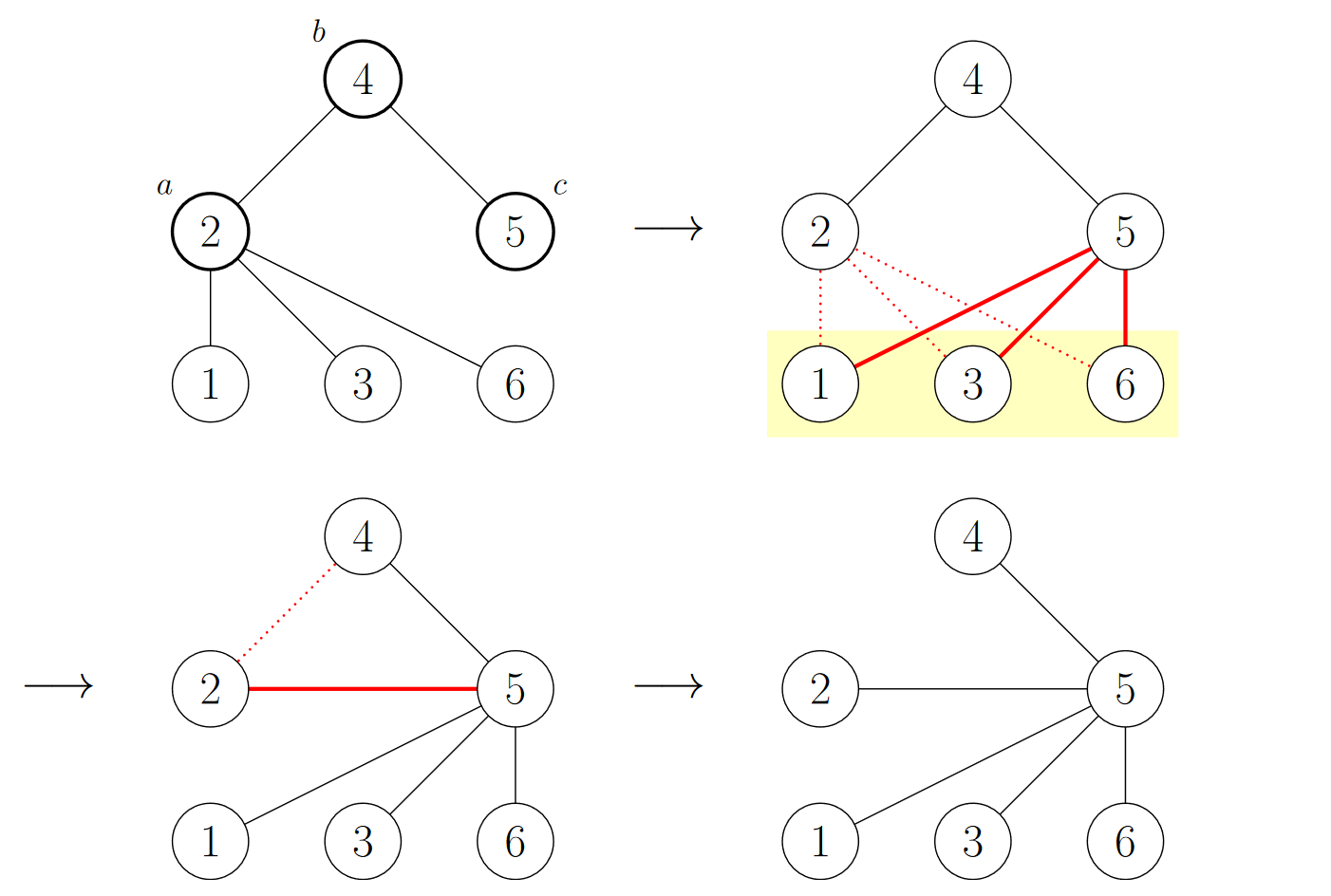Solution -「CF 1375G」Tree Modification
Link.
给定一棵 个结点的树,每次操作选择三个结点 ,满足 ,并令 的所有邻接点(包括 )与 邻接且不再与 邻接;再令 与 邻接。求至少几次操作使树变为菊花图。
。
操作图例:

和 CF1025G 有点类似。不妨令 为树的根,结点 的深度记为 ,。构造势能函数 ,有:
先考虑目标状态,菊花图的势能显然为 (根是花瓣)或 (根是花蕊)。再观察一次操作带来的势能变化,发现仅有 结点的深度的奇偶性改变,那么:
记初始时树为 ,可知答案为:
复杂度 。嗯唔,做完了 www!
/* Clearink */
#include <cstdio>
inline int rint () {
int x = 0, f = 1; char s = getchar ();
for ( ; s < '0' || '9' < s; s = getchar () ) f = s == '-' ? -f : f;
for ( ; '0' <= s && s <= '9'; s = getchar () ) x = x * 10 + ( s ^ '0' );
return x * f;
}
template<typename Tp>
inline void wint ( Tp x ) {
if ( x < 0 ) putchar ( '-' ), x = ~ x + 1;
if ( 9 < x ) wint ( x / 10 );
putchar ( x % 10 ^ '0' );
}
const int MAXN = 2e5;
int n, ecnt, head[MAXN + 5], cnt[2];
struct Edge { int to, nxt; } graph[MAXN * 2 + 5];
inline void link ( const int s, const int t ) {
graph[++ ecnt] = { t, head[s] };
head[s] = ecnt;
}
inline void solve ( const int u, const int f, const int dep ) {
++ cnt[dep & 1];
for ( int i = head[u], v; i; i = graph[i].nxt ) {
if ( ( v = graph[i].to ) ^ f ) {
solve ( v, u, dep + 1 );
}
}
}
int main () {
n = rint ();
for ( int i = 1, u, v; i < n; ++ i ) {
u = rint (), v = rint ();
link ( u, v ), link ( v, u );
}
solve ( 1, 0, 0 );
printf ( "%d\n", ( cnt[0] < cnt[1] ? cnt[0] : cnt[1] ) - 1 );
return 0;
}
势能分析的方法有点像数学上的特征值法。这种操作题没思路的时候不妨研究一下单次操作,构造出一个变化极为简单的“特征”来快速求解。
分类:
B.思想/技巧 / 势能分析



【推荐】国内首个AI IDE,深度理解中文开发场景,立即下载体验Trae
【推荐】编程新体验,更懂你的AI,立即体验豆包MarsCode编程助手
【推荐】抖音旗下AI助手豆包,你的智能百科全书,全免费不限次数
【推荐】轻量又高性能的 SSH 工具 IShell:AI 加持,快人一步
· AI与.NET技术实操系列:基于图像分类模型对图像进行分类
· go语言实现终端里的倒计时
· 如何编写易于单元测试的代码
· 10年+ .NET Coder 心语,封装的思维:从隐藏、稳定开始理解其本质意义
· .NET Core 中如何实现缓存的预热?
· 分享一个免费、快速、无限量使用的满血 DeepSeek R1 模型,支持深度思考和联网搜索!
· 基于 Docker 搭建 FRP 内网穿透开源项目(很简单哒)
· ollama系列01:轻松3步本地部署deepseek,普通电脑可用
· 25岁的心里话
· 按钮权限的设计及实现